Monoceros is a faint constellation located on the celestial equator. Its name translates to unicorn from Greek. Monoceros is the 35th largest constellation in the sky.
Key Facts & Summary
- The constellation of Monoceros is relatively new in Western astronomy; it isn’t part of Ptolemy’s 48 constellations listed in his Almagest.
- Among the 88 modern constellations, Monoceros is the 35th largest, occupying an area of 482 square degrees.
- Monoceros is quite faint since it doesn’t have any stars brighter than magnitude 3.0.
- The brightest star in Monoceros is Beta Monocerotis, which is a triple star system that has a combined visual magnitude of 3.74.
- Currently, around 16 stars in Monoceros have been confirmed to host planets.
- There is only one Messier object in Monoceros, the open cluster Messier 50.
- There are two minor meteor showers associated with the constellation of Monoceros, the December Monocerids, and the Alpha Monocerids.
- Some other notable stars in Monoceros are CoRoT-7 (which hosts super-Earth planets), Alpha Monocerotis, Gamma Monocerotis, Epsilon Monocerotis, S Monocerotis, V838 Monocerotis, Plaskett’s Star, and one of the nearest black holes to our Solar System, the A0620-00 binary star system.
- The constellation of Monoceros hosts numerous interesting deep-sky objects, such as the Rosette Nebula, the Christmas Tree Cluster, the Cone Nebula, Hubble’s Variable Nebula, and the reflection nebula IC 447 among others.
- The best time to observe stars and deep-sky objects in the constellation of Monoceros is during the month of February.
- The constellation of Monoceros was introduced by the Dutch astronomer and cartographer Petrus Plancius, through the observations of Dutch navigators in the 17th century.
The constellation of Monoceros’ first appearance occurred on a globe created by Dutch astronomer and cartographer Petrus Plancius in 1612. It was later charted by German astronomer Jakob Bartsch as Unicornu, on his star chart of 1624.
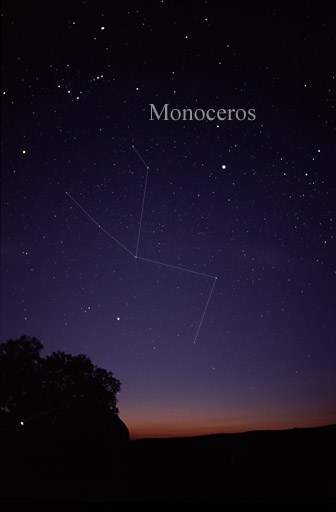
The German astronomers Heinrich Wilhelm Olbers and Ludwig Ideler indicate that the constellation might be older than previously believed, quoting that “the second horse between the Twins and the Crab has many stars, but not very bright” – however, these references refer to a horse, and not a unicorn, and their positions do not match.
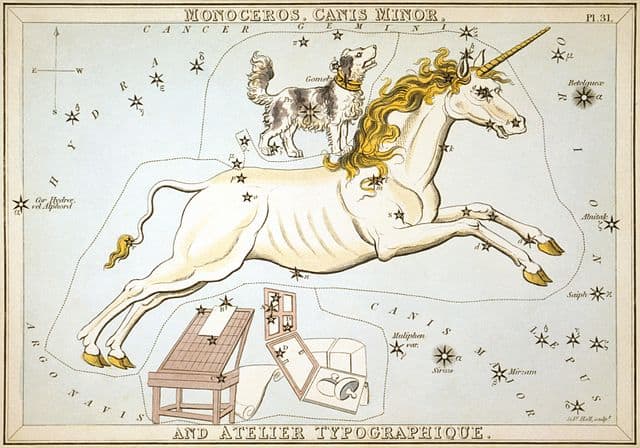
Location
The constellation of Monoceros is the 35th largest constellation in the sky. Monoceros spreads out for over 482 square degrees, being located in the second quadrant of the northern hemisphere (NQ2), and it can be seen at latitudes between +75o and 90o.
- Right Ascension: 7.15h
- Declination: -5.74o
- Visible: between +75o and 90o
- Best viewed: at 21:00 ( 9 p.m. ) during February
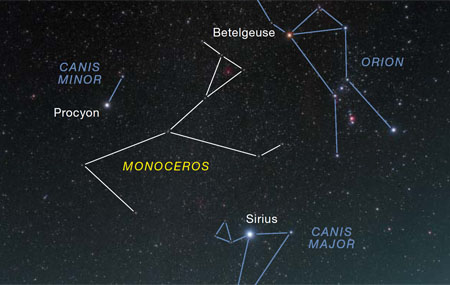
Monoceros is surrounded by the constellations of Canis Major, Canis Minor, Gemini, Hydra, Lepus, Orion, and Puppis. The constellation of Monoceros belongs to the Orion family of constellations, together with Canis Major, Canis Minor, Lepus, and Orion.
Messier Objects
The constellation of Monoceros contains only one Messier object, the open cluster Messier 50.
Messier 50
Messier 50, also designated as NGC 2323, is an open cluster that was first recorded by G.D. Cassini before 1711, and independently discovered by Charles Messier in 1772.
Messier 50 is located at around 3,000 light-years away from Earth, at the rear edge of the Cma OB1 Association. The core radius of this open cluster spreads for around 5.9 light-years and spans 17.8 light-years.
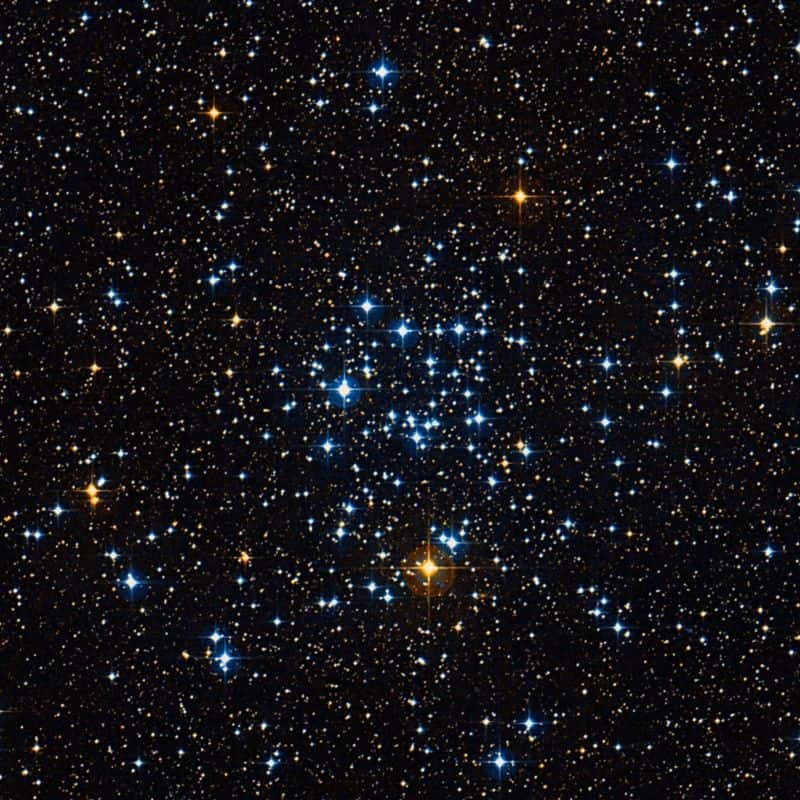
Messier 50 has an apparent magnitude of 5.9., and it contains over 500 stars that have a combined mass of 285 solar masses. This cluster is only 140 million years old.
Notable Stars
The constellation of Monoceros is quite faint since it doesn’t have any stars brighter than magnitude 3.0. The brightest star in Monoceros is Beta Monocerotis, which is a triple star system that has a combined visual magnitude of 3.74.

Currently, around 16 stars in Monoceros have been confirmed to host planets. Some other notable stars in Monoceros are CoRoT-7 (which hosts super-Earth planets), Alpha Monocerotis, Gamma Monocerotis, Epsilon Monocerotis, S Monocerotis, V838 Monocerotis, Plaskett’s Star, and one of the nearest black holes to our Solar System, the A0620-00 binary star system.
Beta Monocerotis
Beta Monocerotis is a triple star system that appears as a single star to the naked eye, located at around 700 light-years away from our Solar System.
The combined visual magnitude of Beta Monocerotis is 3.74, however, the three stars are much fainter, with the primary A, having an apparent magnitude of 4.60, B has around 5.00, while C is the faintest at 5.32.
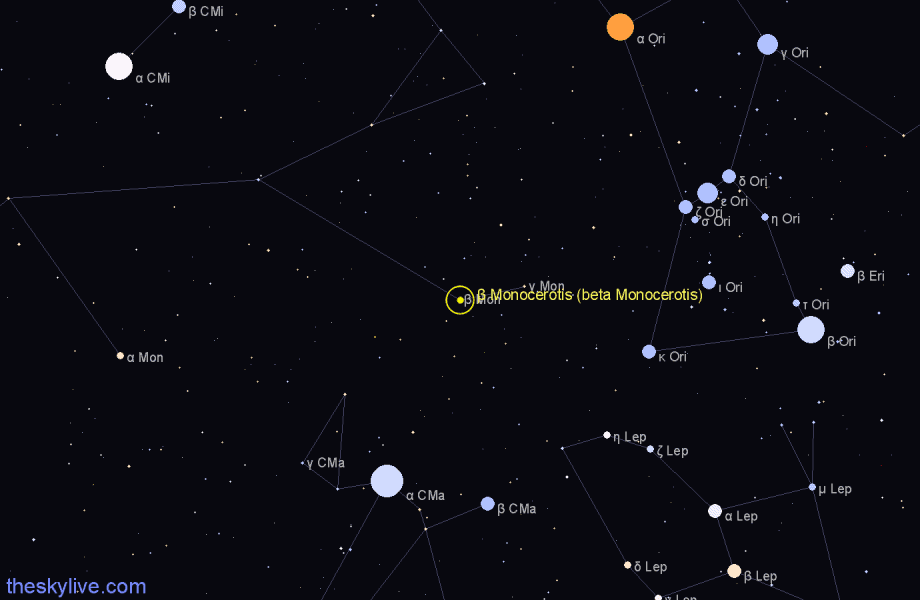
All three stars are Be-type stars. The primary star, A, has around 870% of our Sun’s mass, it is 3,200 times brighter, more than three times hotter ( 18,070 K ), and it is a very fast-spinning star, with a rotational velocity of around 346 km / 214.9 mi per second.
The secondary star, B, has around 620% of our Sun’s mass, and it is 1,600 times brighter. B is also a fast-spinning star, with a rotational velocity of around 123 km / 76.4 mi per second.
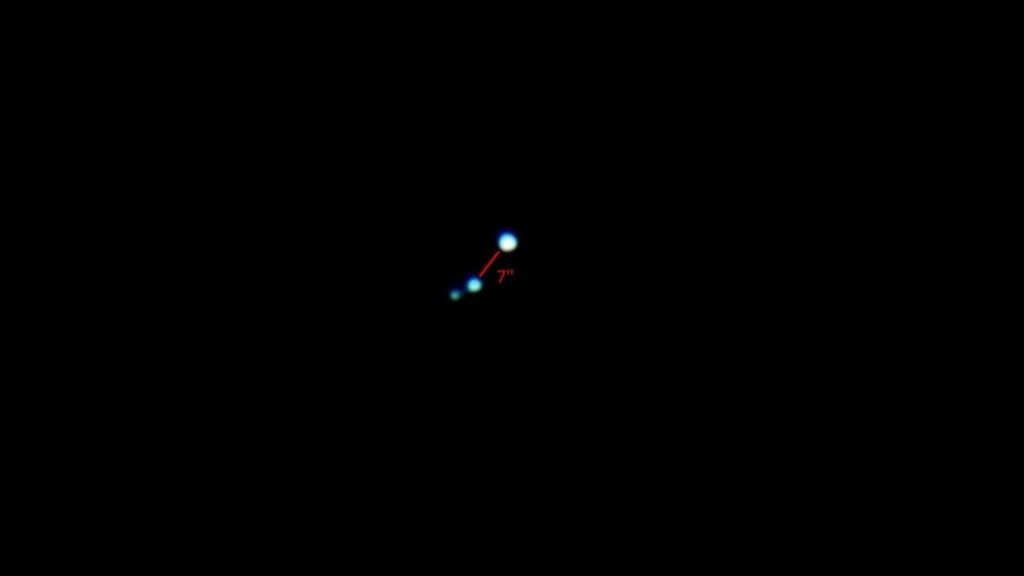
The third component, C, has around 600% of our Sun’s mass, it is 1,300 times more luminous, and it is also an extremely fast-spinning star, with a rotational velocity of around 331 km / 205.6 mi per second.
Alpha Monocerotis
Alpha Monocerotis is an evolved G-type giant star that has an apparent magnitude of 3.94. It is located at around 148 light-years away from us.
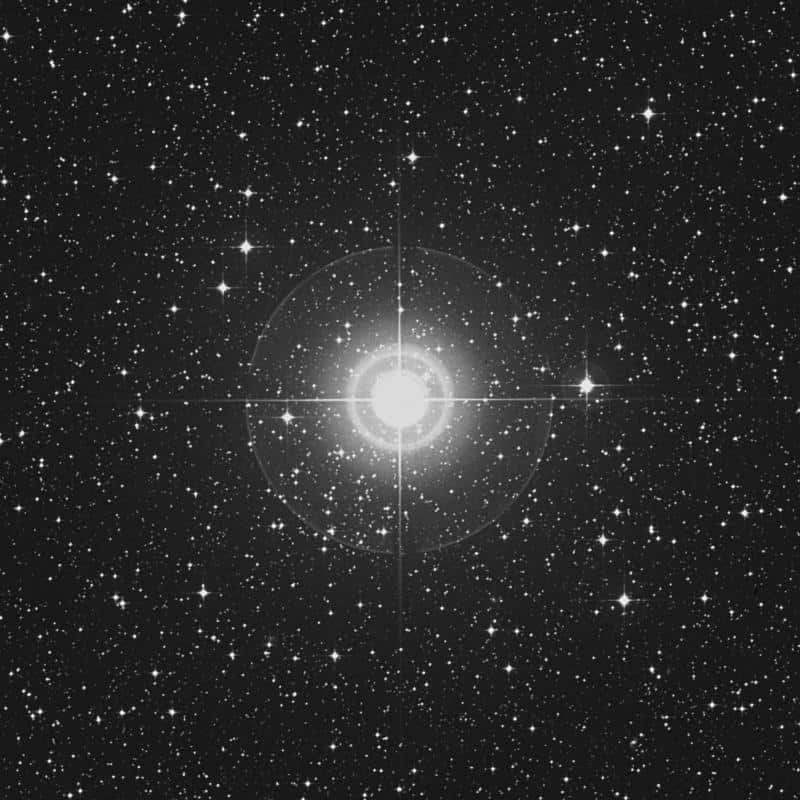
Alpha Monocerotis has around 202% of our Sun’s mass, 1,010% of its radius, and it is cooler than our Sun, having a temperature of around 4,879 K.
Gamma Monocerotis
Gamma Monocerotis is a binary star located at around 500 light-years away from us. It has an apparent magnitude of 3.96. This star is an evolved K-type giant, and it is also a mild barium star, meaning it has abnormal abundances in its spectrum of s-process elements, including barium.
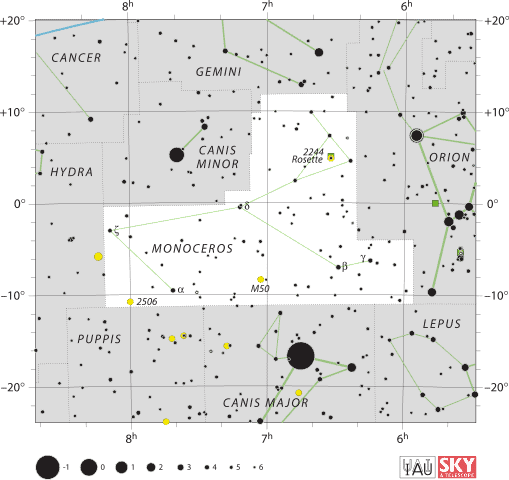
Gamma Monocerotis has a companion white dwarf star orbiting it. This star is 1,051 times brighter than our Sun, yet it is cooler, having surface average temperatures of around 4,375 K.
Epsilon Monocerotis
Epsilon Monocerotis is a binary star located at around 122 light-years away from us. It has an apparent magnitude of 4.39, and it is often used as a navigation star towards the Rosette Nebula.
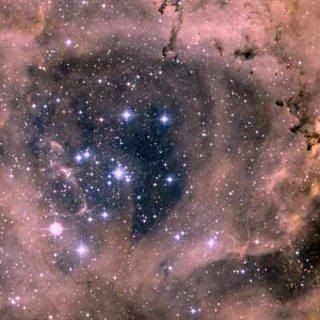
The primary star is a white-hued subgiant that has around 204% of our Sun’s mass, 250% of its radius, and it is 25 times brighter. This star also spins very fast, having a rotational velocity of around 149 km / 92.5 mi per second.
The secondary star is a yellow-hued F-type main-sequence star that has an apparent magnitude of 6.72. This star has around 116% of our Sun’s mass, 110% of its radius, and it is 2.39 times brighter.
S Monocerotis
S Monocerotis, also known as 15 Monocerotis, is a massive multiple and variable star system, being the brightest object in the Christmas Tree open cluster in the area cataloged as NGC 2264.
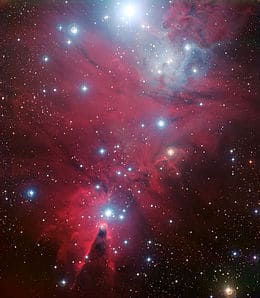
S Monocerotis is located at around 720 parsecs away, and its brightest stars have an apparent magnitude of 5.90, and 7.830. The brightest star has around 2,910% of our Sun’s mass, 990% of its radius, and it is a whopping 214,000 times brighter.
Apart from this, the star is 6.6 times hotter than our Sun, having temperatures of around 38,500 K. This extremely hot star is also a fast spinner, having a rotational velocity of around 120 km / 74.5 mi per second. The second biggest star in this system has 2,130% of our Sun’s mass.
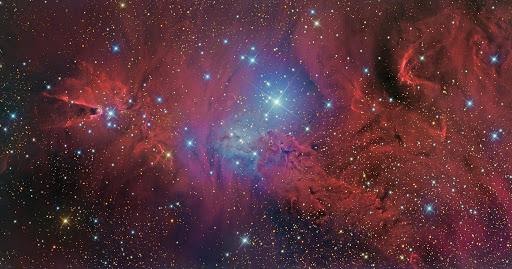
V838 Monocerotis
V838 Monocerotis is a cataclysmic variable or outburst star situated at around 19,900 light-years away from us. It has an apparent magnitude that varies from 6.75 to 15.6.
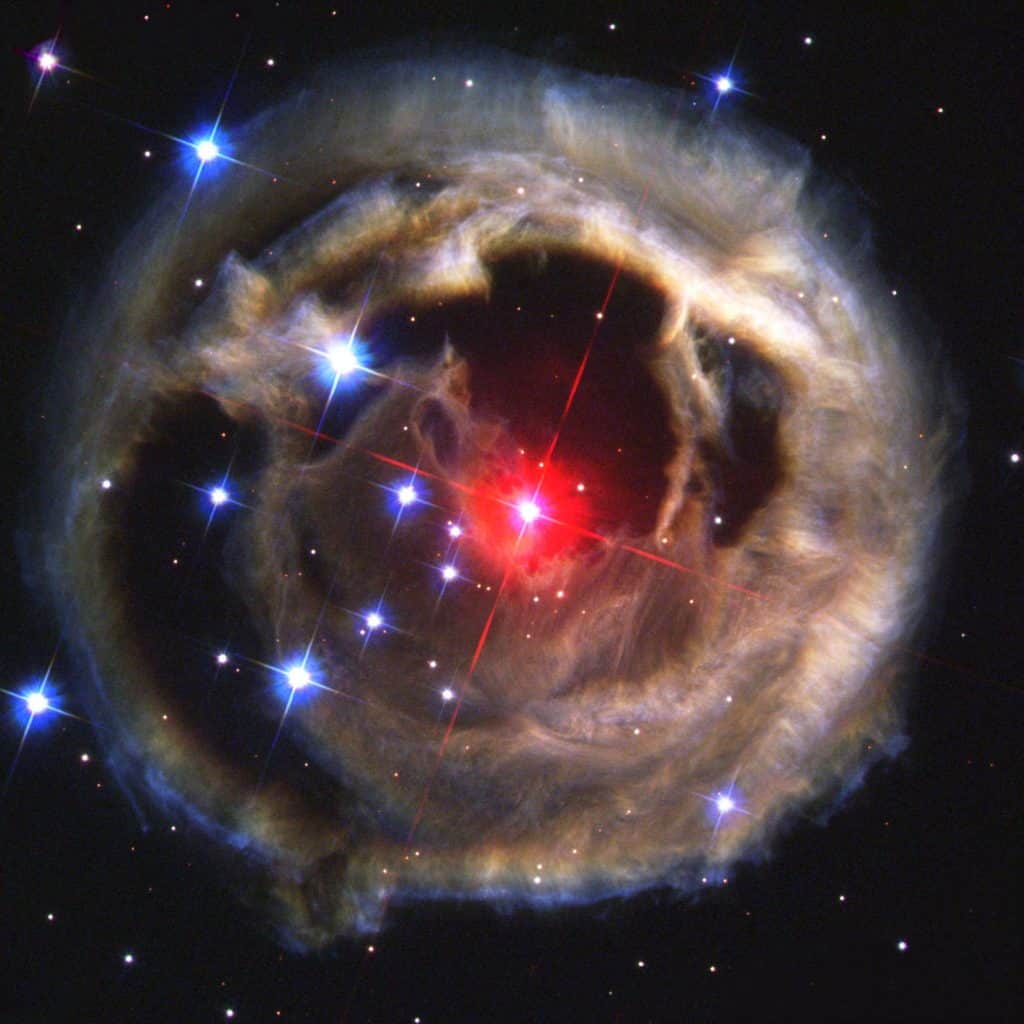
V838 Monocerotis was among the largest stars ever discovered until its sudden outburst. The most recent estimates show that this star had around 75,000% of our Sun’s radius, being 15,000 times brighter. It remains one of the most closely studied stars in the night sky due to its uniqueness.
Plaskett’s Star
Plaskett’s Star, also known as HR 2422 or V640 Monocerotis, is a spectroscopic binary star located at around 5,245 light-years away from us. It has an apparent magnitude of 6.06.
This star is among the most massive binary stars known to us, with a total mass of around one hundred times that of the Sun. Plaskett’s Star is devised into the A and B components.
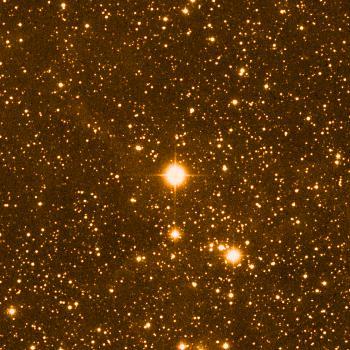
The first component, A, has around 5,400% of our Sun’s mass, 1,420% of its radius, and it is around 224,000 times brighter, and 6 times hotter.
The second component, B, has around 5,600% of our Sun’s mass, 1,080% of its radius, it is 123,000 times brighter, and it is also more than 6 times hotter than our Sun. The B component is also a very fast-spinning star, having a rotational velocity of around 300 km / 186.4 mi per second.
A0620-00
A0620-00, designated as V616 Monocerotis, is a binary star system located at around 5,460 light-years away from us. It has an apparent magnitude of 11.2. This star system contains a K-type main-sequence star and an object which cannot be seen, yet its mass has been calculated.
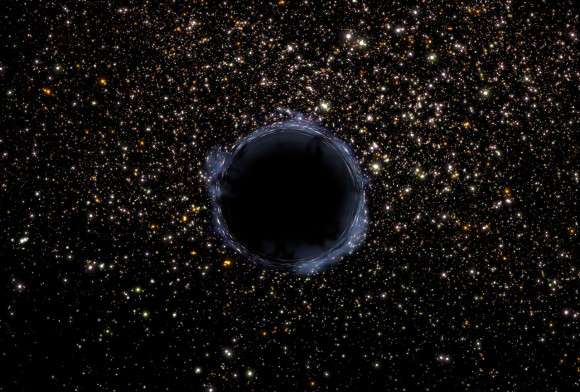
The secondary object has around 661% of our Sun’s mass, therefore it is too massive to be a neutron star, and many believe that is is a stellar-mass black hole – making it one of the closest to our Solar System.
The black hole in A0620-00 is pulling matter from its K-type star companion, into the accretion disk. This disk emits significant amounts of visible light and X-rays that have been recorded.
COROT-7
COROT-7 is a G-type main-sequence star located at around 520 light-years away from us. It has an apparent magnitude of 11.668, and it currently has two confirmed exoplanets orbiting it, with a third awaiting confirmation.
COROT-7 is smaller and less massive than our Sun, having 91% of its mass, 82% of its radius while being similarly as hot as our Sun. The two confirmed planets orbiting around it are super-Earth types of planets.
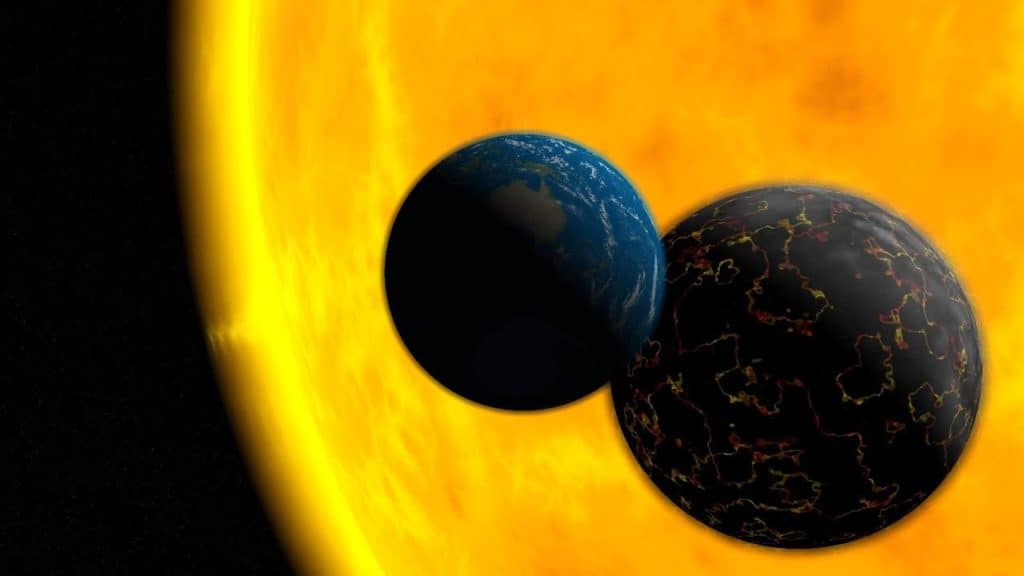
One of the super-Earth planets has between 2.3 to 8.5 Earth masses, while the secondary exoplanet has between 8.4 to 13.5. The third component is suspected to have 16.8 Earth masses, however, further observations are needed.
COROT-1
COROT-1 is a yellow dwarf main-sequence star, quite similar to our Sun, situated at around 2,630 light-years away. It has an apparent magnitude of 13.6.
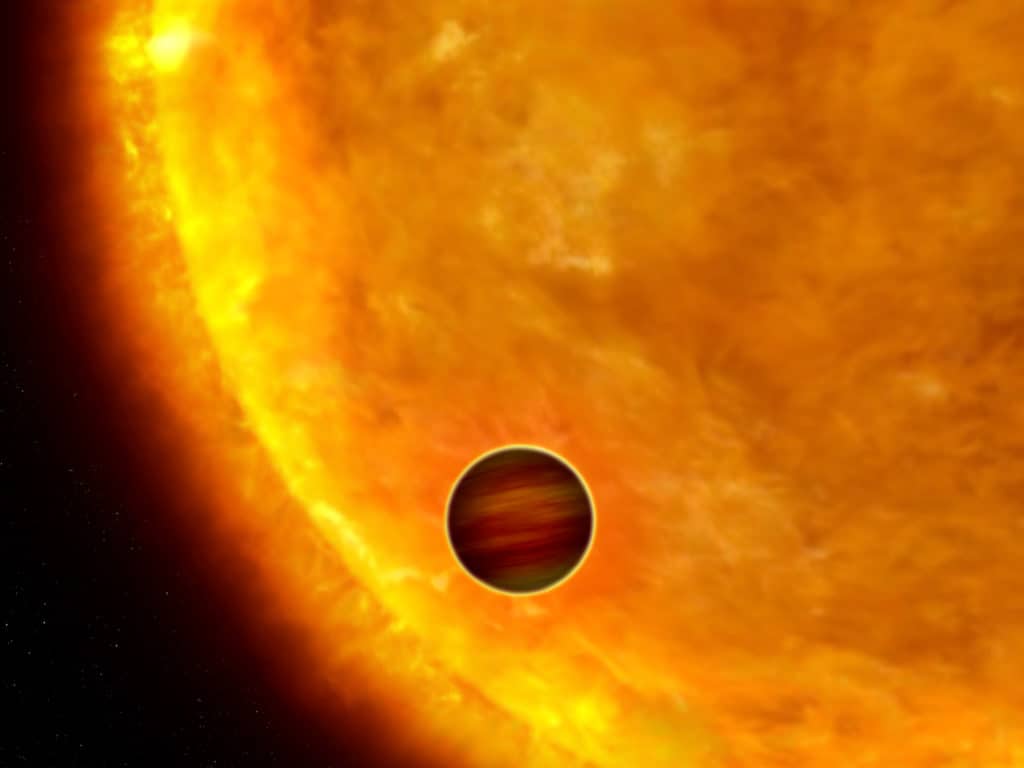
COROT-1 hosts an exoplanet that is almost as massive as Jupiter, which is termed as a hot-Jupiter planet. The star is indeed hotter than our Sun and it affects its exoplanet stronger, however, the star itself is less massive than our Sun, having 95% of its mass.
Delta Monocerotis
Delta Monocerotis is a white main-sequence star located at around 384 light-years away from us. It has an apparent magnitude of 4.15. This star is 350 times brighter than our Sun, having 348% of its mass.
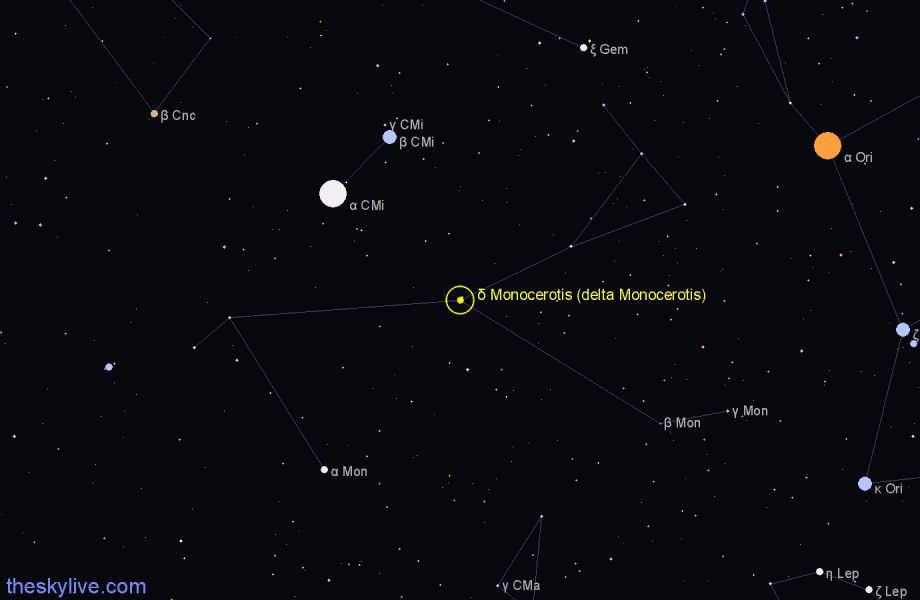
Delta Monocerotis is also hotter than our Sun, having temperatures of around 9,462 K, and it is also a fast-spinning star, with a rotational velocity of around 154 km / 95.6 mi per second.
Zeta Monocerotis
Zeta Monocerotis is a yellow-hued G-type supergiant star located at around 1,060 light-years away from us. It has an apparent magnitude of 4.33.
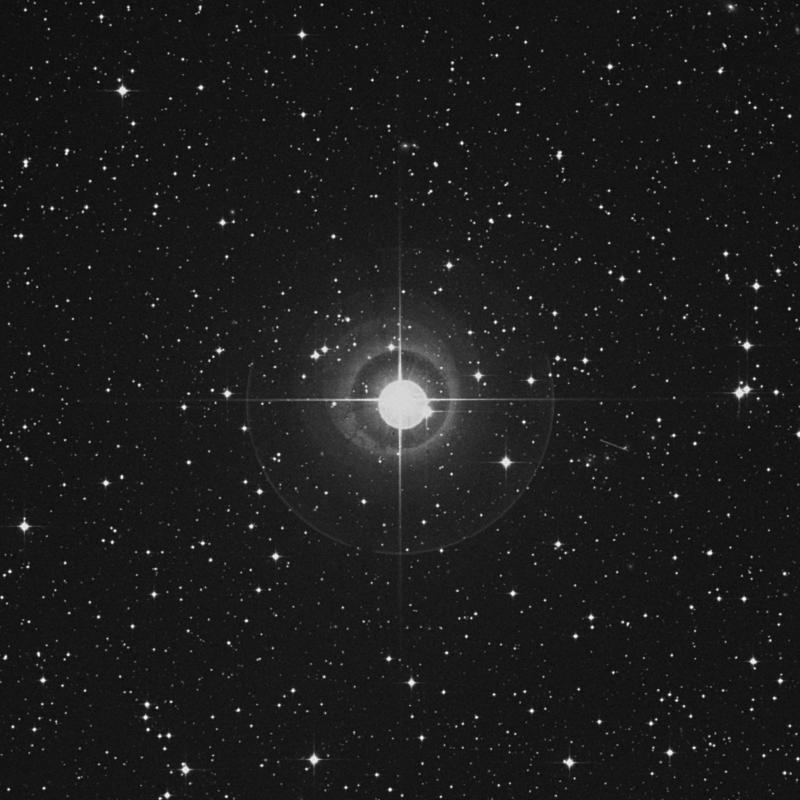
This giant star has 620% of our Sun’s mass, being 2,207 times brighter, yet it is cooler than our Sun, having temperatures of around 5,289 K.
13 Monocerotis
13 Monocerotis is a white supergiant star located at around 2,500 light-years away from us. This star has an apparent magnitude of 4,498, and it lies within the Monoceros OB1 stellar association, halfway between the Rosette Nebula and NGC 2264.

13 Monocerotis is engulfed by a small reflection nebula listed as Van den Bergh 81. This white supergiant star has around 1,200% of our Sun’s mass, 3,400% of its radius, and it is around two times as hot as our Sun.
HD 48099
HD 48099 is a spectroscopic binary star system, with both components being massive luminous O-type stars. The system has an apparent magnitude of 6.37.
The primary star has around 5,500% of our Sun’s mass, 1,160% of its radius, and it is 450,000 times brighter than our Sun. Its surface temperatures have been estimated at around 44,000 K, more than 7 times as hot as our Sun.
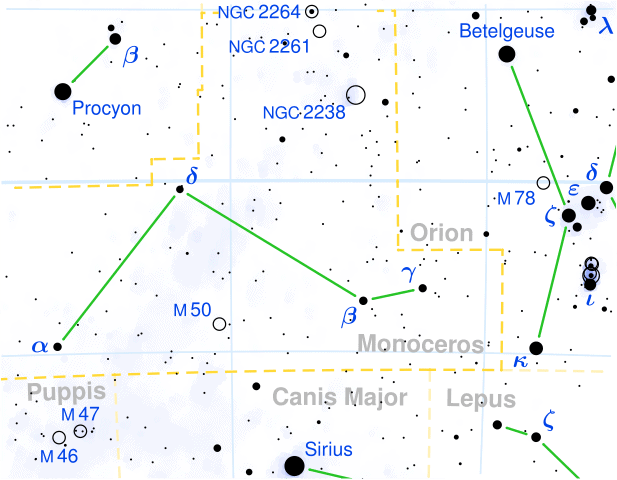
The primary star is also a fast spinner, having a rotational velocity of around 330 km / 205 mi per second. The secondary star has around 1,900% of our Sun’s mass, 650% of its radius, and it is 40,000 times brighter.
It is also hotter than our Sun, with temperatures at around 32,000 K, and it has a rotational velocity of around 185 km / 114.9 mi per second.
HD 46375
HD 46375 is a K-type subgiant star located at around 114 light-years away from us. It has an apparent magnitude of 7.84. This star also has an exoplanet orbiting it. The exoplanet has around three-quarters of Saturn’s mass.
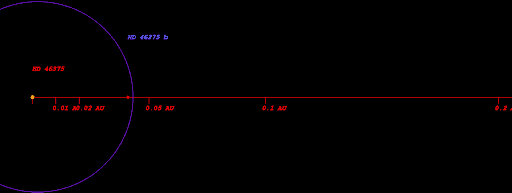
Deep-sky Objects
The constellation of Monoceros hosts numerous interesting deep-sky objects, such as the Rosette Nebula, the Christmas Tree Cluster, the Cone Nebula, Hubble’s Variable Nebula, and the reflection nebula IC 447 among others.
The Rosette Nebula
The Rosette Nebula, also known as Caldwell 49, or NGC 2237, is an H II region located near one end of a giant molecular cloud in the Milky Way galaxy.
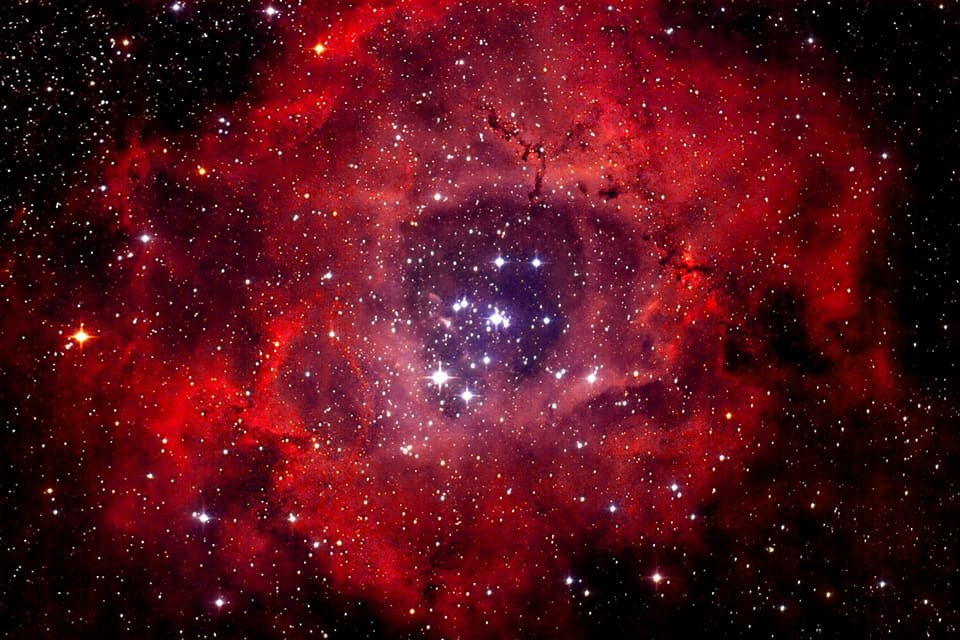
The nebula is situated at around 5,200 light-years away from us, and it has an apparent magnitude of 9.0. It has a radius of around 65 light-years.
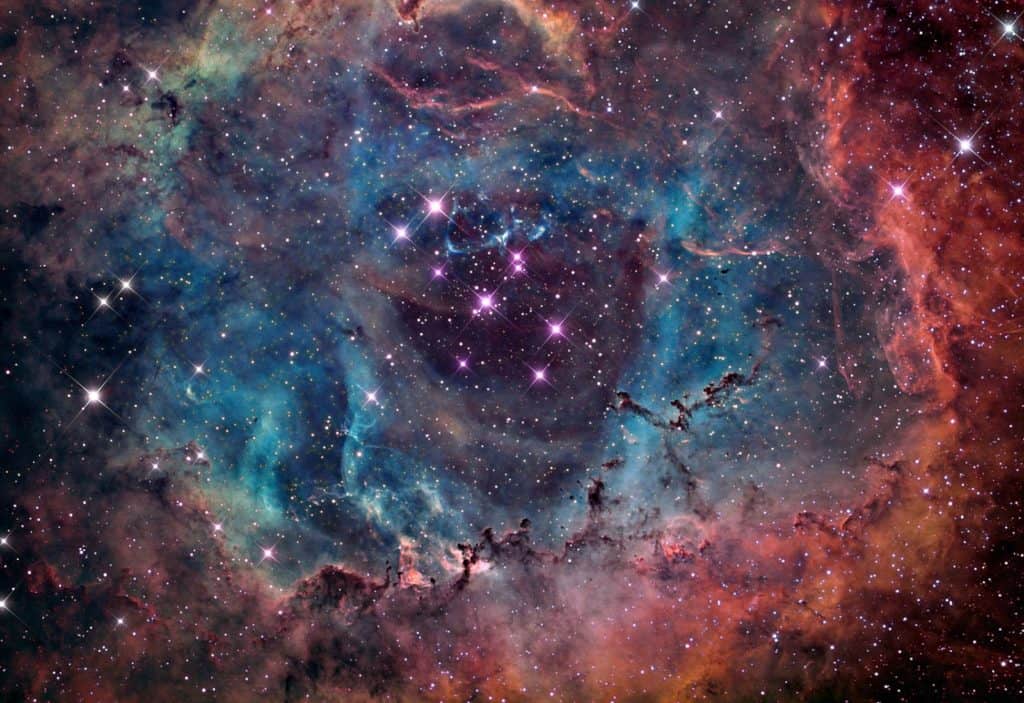
The Christmas Tree Cluster & Cone Nebula
NGC 2264 is the designation that identifies the Cone Nebula and the Christmas Tree cluster as a single object. The Snowflake Cluster and the Fox Fur Nebula are within this designation but not officially included.
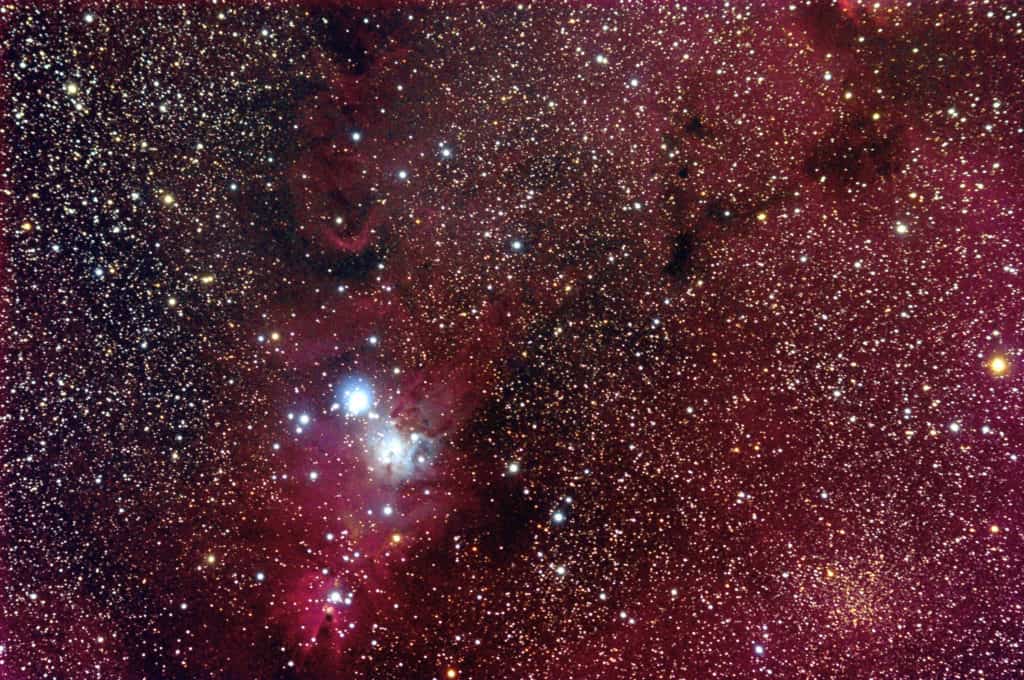
NGC 2264, and all of its components, is located at around 2,600 light-years away from us, and it has an apparent magnitude of 3.9.
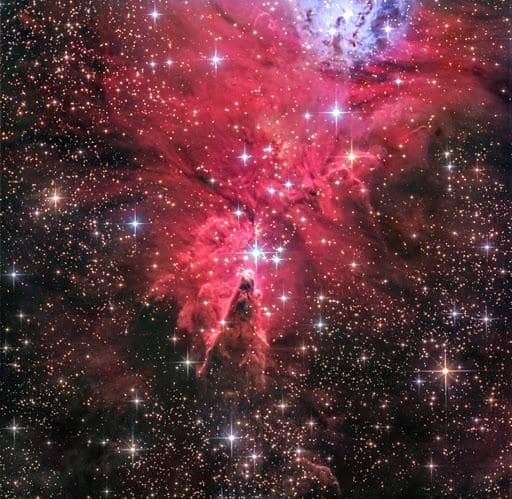
Hubble’s Variable Nebula
Hubble’s Variable Nebula, designated as NGC 2261 or Caldwell 46, is a variable nebula illuminated by the star R Monocerotis. It is situated at around 2,500 light-years away, having an apparent magnitude of 9.0.
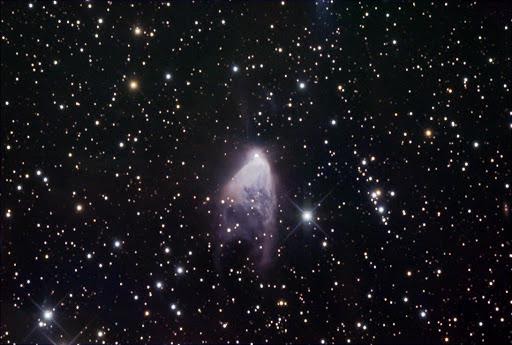
NGC 2244
NGC 2244, also known as the Satellite Cluster or Caldwell 50, is an open cluster in the Rosette Nebula, which has several O-type stars. It is located at around 5.2-kilo light-years away, and it has an apparent magnitude of 4.8.
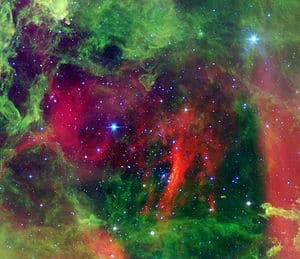
The radius of NGC 2244 has been estimated at around 18 light-years, while its age is somewhere around 5 million years. The brightest members of this cluster are the K-class giant 12 Monocerotis, the O-type star HD 46223 which is 400,000 times brighter than our Sun, and the O-class star HD 46150, which is 450,000 times brighter than our Sun.
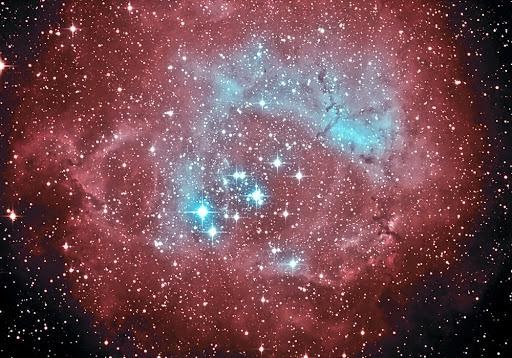
The Red Rectangle Nebula
The Red Rectangle Nebula, also known as HD 44179, is a protoplanetary nebula located at around 2.3-kilo light-years away from us. It has an apparent magnitude of 9.02. The star situated in the center of the nebula is a binary system.
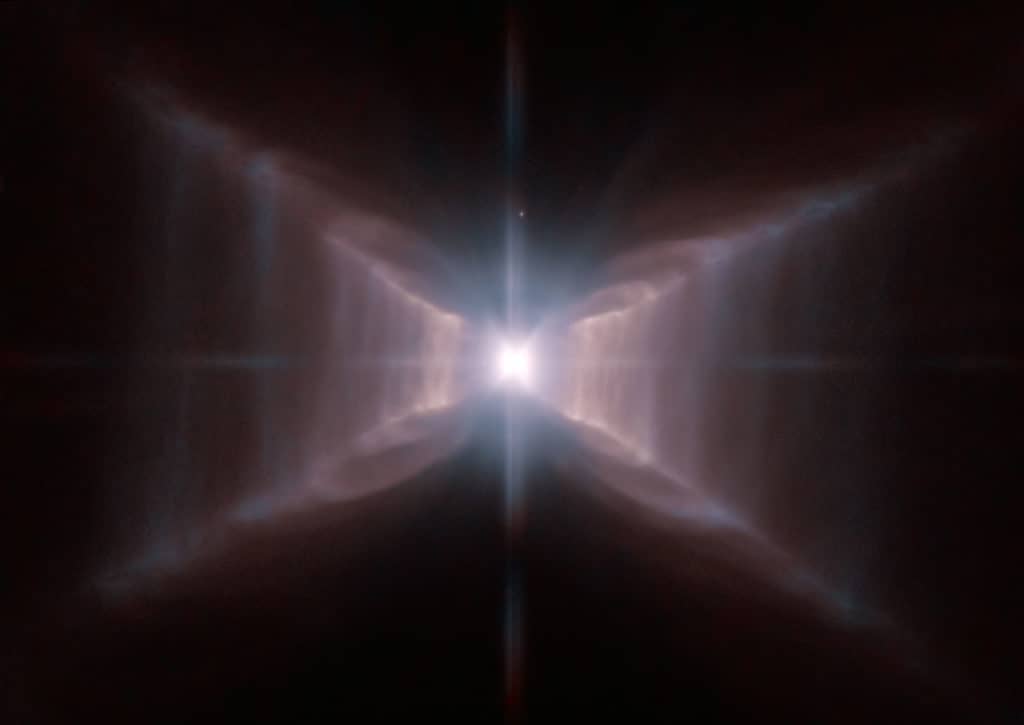
NGC 2232
NGC 2232 is a bright open cluster centered on the star 10 Monocerotis. It is located in the Gould Belt, close to the Orion Nebula cluster, at around 1,060 light-years away from us.
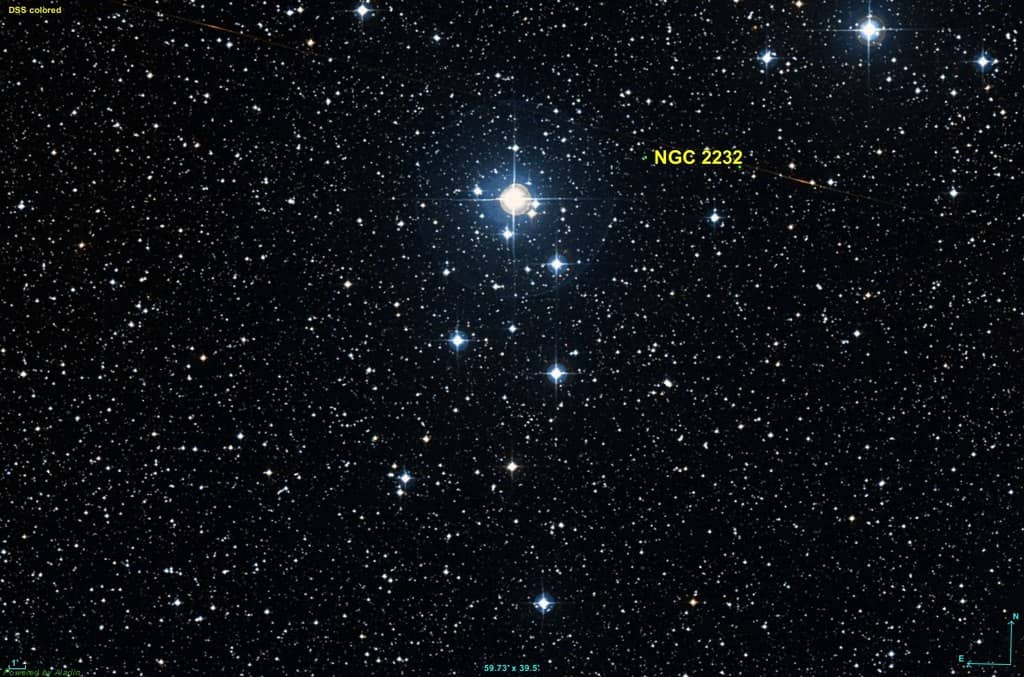
NGC 2232 has an apparent magnitude of 3.9, and it is among the nearest open clusters to the Solar System, having around 100 solar masses, and a radius of about 15 light-years.
The Seagull Nebula
The Seagull Nebula, designated as IC 2177, is a region of nebulosity that lies along the border between the constellations f Monoceros and Canis Major.
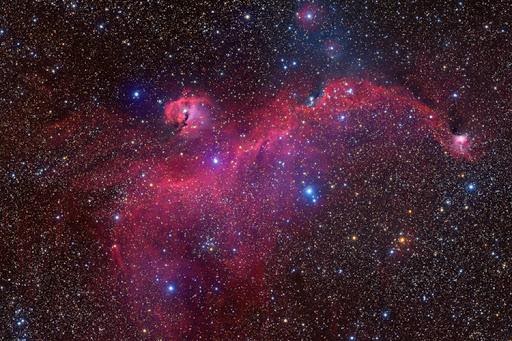
It is a roughly circular H II region centered on the Be star HD 55367. The Seagull Nebula is situated at around 3,650 light-years away from us, having an apparent magnitude of 15.23.
Meteor Showers
There are only two minor meteor showers associated with the constellation of Monoceros, the December Monocerids, and the Alpha Monocerids.
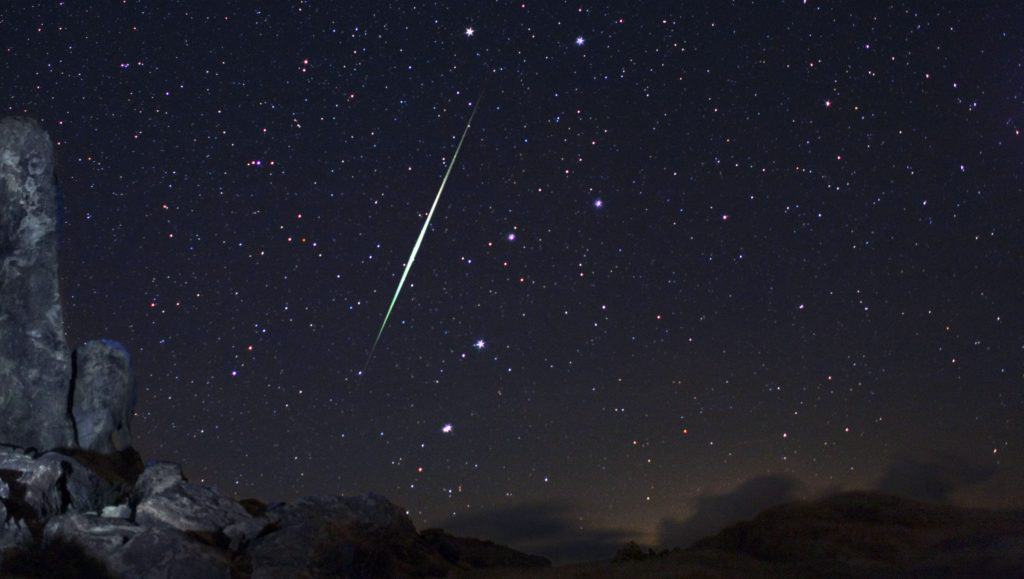
The December Monocerids runs from November 9th to December 11th, peaking on the 8th of December each year, with only two meteors per hour being the average rate of this shower.
Did you know?
- The French scholar Joseph Scaliger is reported to have found Monoceros on an ancient Persian sphere.
- Another French astronomer, Camille Flammarion, believed that a former constellation, Neper (the Auger), occupied the area of the sky now home to Monoceros and Microscopium, but this is disputed.
- The Chinese asterisms the Four Great Canals, and the Outer Kitchen, all lay within the boundaries of Monoceros.
Sources:
Image Sources:
- https://upload.wikimedia.org/wikipedia/commons/a/af/MonocerosCC.jpg
- https://upload.wikimedia.org/wikipedia/commons/thumb/e/e3/Sidney_Hall_-_Urania%27s_Mirror_-_Monoceros%2C_Canis_Minor%2C_and_Atelier_Typographique.jpg/640px-Sidney_Hall_-_Urania%27s_Mirror_-_Monoceros%2C_Canis_Minor%2C_and_Atelier_Typographique.jpg
- https://skyandtelescope.org/wp-content/uploads/Monoceros-chart-fi.jpg
- https://www.messier-objects.com/wp-content/uploads/2015/05/Messier-50.jpg
- https://www.go-astronomy.com/images/constellations/Monoceros.jpg
- https://theskylive.com/sky/stars/finder-charts/beta-monocerotis-finder-chart.png?c=1586689670
- https://i.ytimg.com/vi/KsLLkT0tNGo/maxresdefault.jpg
- https://theskylive.com/sky/stars/star-images/29/2970_800.jpg
- https://upload.wikimedia.org/wikipedia/commons/thumb/c/c6/Monoceros_IAU.svg/509px-Monoceros_IAU.svg.png
- https://lh3.googleusercontent.com/proxy/aD3P0rJkxdtqZiGS8-SforMTn6snSGenN5Rrz8WAeyQ2LXmhOCePtAWZHwgUcP5fnEtebKtcmFYzxxBINAJeDmbj1ZV0jE0
- https://upload.wikimedia.org/wikipedia/commons/thumb/0/0f/NGC_2264_cluster.jpg/260px-NGC_2264_cluster.jpg
- https://lh3.googleusercontent.com/proxy/qRYABShNVy1RCypp2NPz6S2lRmqAwdPbxbULDR_BXTbFcWOSeQpoCwsSRoTPBeK4ihQTdpxpZhbYbi6r6zm7xYI6V_8dV1i8UlVDvHh9jXk9itT2ruGNSoIVUeqBf2xnAMq7wRZGuYsiNzbIplx5Ger0YiM6
- https://upload.wikimedia.org/wikipedia/commons/d/d3/V838_Mon_HST.jpg
- https://plaskettfamilytree.files.wordpress.com/2012/10/plasketts-star.jpg?w=640
- https://scx1.b-cdn.net/csz/news/800/2016/whereisthecl.jpg
- https://i.ytimg.com/vi/XPBnmDpyk-s/maxresdefault.jpg
- https://upload.wikimedia.org/wikipedia/commons/2/22/Heic0612b_H.jpg
- https://theskylive.com/sky/stars/finder-charts/delta-monocerotis-finder-chart.png?c=1586800204
- https://theskylive.com/sky/stars/star-images/31/3188_800.jpg
- https://lh3.googleusercontent.com/proxy/OSpKLOxmZKPzC81LVcmcECrqy_dajzXSEbnwbS1JNw9s2NoWq0-mHEcs3T1DMX6s6BgIUFfTDE-6GaUXBy4_X5PcU2zK
- https://upload.wikimedia.org/wikipedia/commons/thumb/9/99/Monoceros_constellation_map.svg/617px-Monoceros_constellation_map.svg.png
- https://lh3.googleusercontent.com/proxy/cxjOrKWRmIcp_KTYdHJPeugdkVrdOQ8tRGAmxT-kzQO5tmSQHDfwAiZFKmNqNlplJrvZS9VJWDTKKp65WWjHIZg74sSyzM5gaVCX1nJhq_A
- https://2.bp.blogspot.com/-gYKYUlnNxxY/UPkOWqEA2WI/AAAAAAAAMrs/e0Bkd63HbCQ/s1600/rosette_lula_1700.jpg
- https://www.constellation-guide.com/wp-content/uploads/2013/04/NGC-2244-and-the-Rosette-Nebula.jpg
- https://www.jemartool.com/astro/images/ngc2264_q453_50%25.jpg
- https://lh3.googleusercontent.com/proxy/Mu5r_nEHVPx23J59dxymvb3tp8QcwrCla_0xWxG66hffwBM0lTwGOT4n3WY5VET5Xnb2tJjGVVd_c3BU1QlJT-iLK52JqDDeVisJR_RhdUkEJJXoeATOpIcrBQlCIuOesI1AbmolqQ
- https://lh3.googleusercontent.com/proxy/4PCDVpPcoWIS1rGlOdRnOLHrXHFiipZB4zcJiaZ6TDgSudTSjF-8jmQ_OcMYXAkcgvv1XhIePRW0fmK1Yce0bjpkIakjbLi4T2BX
- https://upload.wikimedia.org/wikipedia/commons/thumb/c/c1/Ngc2244c.jpg/300px-Ngc2244c.jpg
- https://lh3.googleusercontent.com/proxy/P-dtrqn97CrtnvtHUu3ko4zMI9LuzGCNz9mZ0UEK0mXadPUiA2CpgojP9_fWhJ9ur0DvAiqO_U44vjEA4zrEqUg8EuycZJdyBVpjxLhf7g8AvN9WUHnviq0u-c9L
- https://www.nasa.gov/sites/default/files/thumbnails/image/hubble_friday_04082016.jpg
- https://upload.wikimedia.org/wikipedia/commons/thumb/f/f5/NGC_2232_DSS.jpg/1024px-NGC_2232_DSS.jpg
- https://lh3.googleusercontent.com/proxy/h3qEymKd2CAqRIEHRR_eWzYNK57Ztb6ndKlohJ9gzPsFQ0ks6E98k_SvteO67eO6h3Bald3VxMxdBfJ9pA
- https://www.gannett-cdn.com/-mm-/9b217dd8ff2af1c6f7b6645ba24df5c1a4150239/c=0-56-3000-1751/local/-/media/2015/12/11/USATODAY/USATODAY/635854265911170475-AP-Meteor-Shower.jpg
